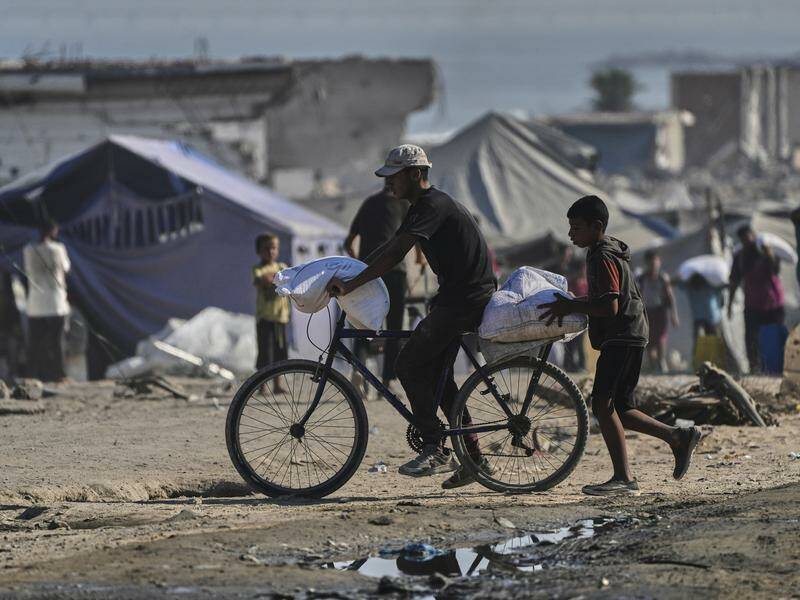
Israeli airstrikes and gunfire have resulted in the deaths of at least 33 Palestinians in Gaza, according to local hospitals. The casualties include individuals seeking shelter in tents and those searching for food amid escalating famine conditions in the region. This surge in violence comes as international pressure mounts on Israel regarding its ongoing military operations, which have lasted for over 22 months.
Israeli Defence Minister Yoav Gallant has indicated that a new military operation targeting Gaza City could be imminent, potentially leading to widespread destruction in an area already suffering from severe humanitarian crises. Aid organizations have long warned that the conflict, ignited by Hamas’ attack on October 7, 2023, coupled with stringent Israeli restrictions on essential supplies, has driven many to the brink of starvation. Israel has dismissed claims of famine as “an outright lie.”
Ceasefire negotiations remain stalled, as mediators await Israel’s next actions. Recent reports indicate that strikes in southern Gaza killed at least 17 individuals, more than half of whom were women and children, according to morgue records and health officials at Nasser Hospital. These strikes reportedly targeted shelters for displaced persons in Khan Younis.
The humanitarian toll is evident, as illustrated by the heart-wrenching scenes at local hospitals. One young boy, mourning his brother, asked, “Awad, why did you leave me?” Another grieving relative, Hekmat Foujo, called for a ceasefire, pleading, “We want to rest. Have some mercy on us.”
In northern Gaza, Israeli gunfire claimed the lives of at least five individuals seeking aid near the Zikim crossing, where UN aid deliveries occur, according to health officials at Sheikh Radwan Field Hospital. Additional attacks across various locations resulted in eleven more fatalities, based on reports from hospitals and the Palestinian Red Crescent.
The Israeli military stated it was investigating the incidents and claimed it was unaware of strikes in the specified Khan Younis location. Amid the chaos, many residents, like Mohamed Saada, left empty-handed after attempting to secure food for their families. “I came here to bring food for my children but couldn’t get anything, due to the huge numbers of people and the difficulty of the situation between the shootings and the trucks running over people,” he explained.
According to a report released by the Integrated Food Security Phase Classification, the famine in Gaza City is likely to worsen if hostilities and restrictions on aid persist. The report highlights that nearly half a million people, approximately one-fourth of Gaza’s population, face catastrophic hunger. This alarming announcement follows a period of increased blockades imposed by Israel earlier this year, which limited access to essential supplies.
In response to global outrage over distressing images of malnourished children, Israel has implemented airdrops and allowed some aid deliveries by land. Nonetheless, organizations such as the UN assert that these measures fall significantly short of meeting the urgent needs of the population. Journalists on the ground have reported chaos surrounding aid distribution, with frequent accounts of Israeli forces firing at those seeking assistance. The military maintains that warning shots are fired only when individuals approach troops or pose a threat.
Israeli Prime Minister Benjamin Netanyahu‘s office contends that sufficient aid has been permitted to enter Gaza during the conflict, while accusing Hamas of starving hostages. With ground troops currently active in strategic areas, the anticipated military operation in Gaza City could commence within days, affecting hundreds of thousands of civilians still in the region.
Aid group Doctors Without Borders (MSF) reports a significant increase in patients at its clinics around Gaza City, as many flee the violence. Caroline Willemen, MSF’s project coordinator, noted heightened airstrikes since August. “Those who have not moved are wondering what they should do,” she remarked. “People want to stay; they have been displaced endlessly before, but they also know that at some point it will become very dangerous to remain.”
The situation continues to evolve, with the humanitarian crisis deepening as both sides navigate the complexities of war and aid amidst rising casualties and suffering.





